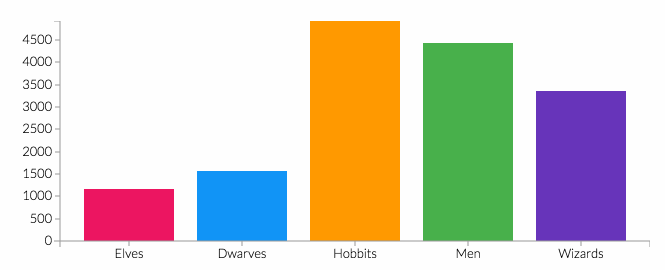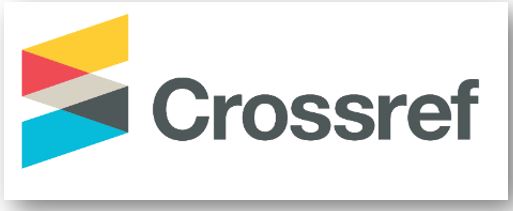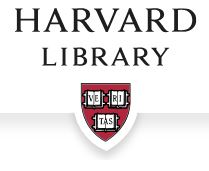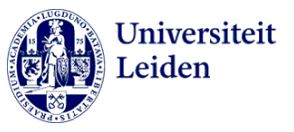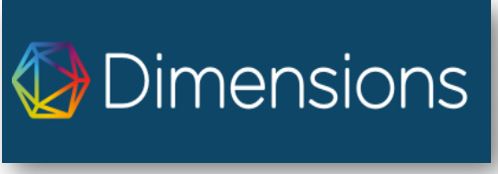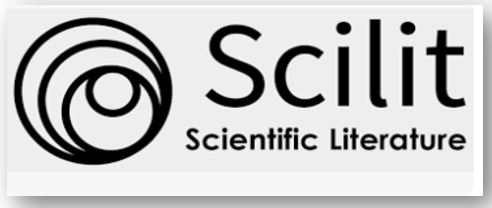Perkembangan Wakaf Produktif dalam Analisis Bibliometrik
DOI:
https://doi.org/10.61231/miftah.v3i1.351Keywords:
Waqf, Islamic Sosial Financial, Productive WaqfAbstract
The purpose of this study is to capture the development of research on waqf and to determine the direction of future research. The research method is based on data based on Scopus indexed publications using the Publish or Perish, Excel and VOSViewer applications in Bibliometric analysis. The results of the study show that the dominance of publications with the theme of waqf is still dominated by countries with Muslim populations. Malaysia, Indonesia and Turkey are 3 countries that dominate publications with the theme of waqf. Publication themes that can be prioritized in future publications include the theme of productive waqf with Islamic social finance. Researchers can create a link between the two themes in a publication.
References
Ahmad, A. R., Baharudin, A., Yusoff, W. Z. W., Abdullah, S. M. D. S., & Soon, N. K. (2016). Transformation of Waqf implementation at Malaysian public universities. Advanced Science Letters, 22(9), 2184–2186. https://doi.org/10.1166/asl.2016.7560
Ahmad, A. U. F., & Karim, M. F. (2019). Opportunities and Challenges of Waqf in Bangladesh: The Way Forward for Socio-Economic Development. In Revitalization of Waqf for Socio-Economic Development (Vol. 1, pp. 193–212). Springer International Publishing. https://doi.org/10.1007/978-3-030-18445-2_10
Alshater, M. M., Hassan, M. K., Rashid, M., & Hasan, R. (2022). A bibliometric review of the Waqf literature. Eurasian Economic Review, 12(2), 213–239. https://doi.org/10.1007/s40822-021-00183-4
Apriantoro, M. S., & Septianozakia, S. (2024). The Potential of Productive Waqf: Research Stream and Future Direction. Pakistan Journal of Life and Social Sciences, 22(1), 1291–1306. https://doi.org/10.57239/PJLSS-2024-22.1.0087
Ascarya, A., Hosen, M. N., & Rahmawati, S. (2022). Designing simple productive waqf models for Indonesia. International Journal of Ethics and Systems, 38(3), 380–401. https://doi.org/10.1108/IJOES-07-2020-0101
Atan, N. A. B., & Johari, F. B. (2017). A review on literature of Waqf for poverty alleviation between 2006-2016. Library Philosophy and Practice, 2017(1). https://www.scopus.com/inward/record.uri?eid=2-s2.0-85021654204&partnerID=40&md5=ae0d6bb27f4c74199d05d1ee82c56458
Ayub, M., Khan, K., Khan, M., & Ismail, M. (2024). Waqf for accelerating socioeconomic development: a proposed model with focus on Pakistan. Qualitative Research in Financial Markets, 16(5), 937–961. https://doi.org/10.1108/QRFM-07-2023-0161
El Khatib, M. (2017). Waqf in Shariah: Basic rules and applications. In Islamic Wealth Management: Theory and Practice (pp. 311–319). Edward Elgar Publishing Ltd. https://doi.org/10.4337/9781786439390.00027
Hamzah, M. T. M., Sulaiman, S., Kamaruddin, M. I. H., & Hasan, A. (2023). Applications of Waqf-Featured Fund in the Malaysian Islamic Fund Management Industry: A Comparative Study. Global Journal Al-Thaqafah, 13(1), 90–118. https://doi.org/10.7187/GJAT072023-7
Hariyanto, E., Taufiq, M., Abidin, Z., & Ulum, M. (2020). Effectiveness of the economic system to Zakat and Waqf for empowerment of the Ummah in Indonesia. International Journal of Advanced Science and Technology, 29(6), 1910–1916. https://www.scopus.com/inward/record.uri?eid=2-s2.0-85084458992&partnerID=40&md5=0501fb0047a2b2e49506ce6bbe59546c
Hassan, M. K., Irsyan, N. M., & Muneeza, A. (2023). The Potential of Waqf-Blended Finance Using Crowdfunding in Indonesia. International Journal of Islamic Thought, 24(1), 72–99. https://doi.org/10.24035/ijit.24.2023.271
Hassan, M. K., Karim, M. F., & Karim, M. S. (2019). Experiences and Lessons of Cash Waqf in Bangladesh and Other Countries. In Revitalization of Waqf for Socio-Economic Development, Volume I (Vol. 1, pp. 59–83). Springer International Publishing. https://doi.org/10.1007/978-3-030-18445-2_5
Ibrahim, S. S. B., Noor, A. H. B. M., Shariff, S. B. M., & Rusli, N. A. B. M. (2016). Analysis of corporate waqf model in Malaysia: An instrument towards muslim’s economic development. International Journal of Applied Business and Economic Research, 14(5), 2931–2944. https://www.scopus.com/inward/record.uri?eid=2-s2.0-84979499921&partnerID=40&md5=ee2b75ef64cd8632332451fecaa76875
Iman, A. H. M., & Mohammad, M. T. S. H. (2017). Waqf as a framework for entrepreneurship. Humanomics, 33(4), 419–440. https://doi.org/10.1108/H-01-2017-0015
Ismail Abdel Mohsin, M. (2013). Financing through cash-waqf: a revitalization to finance different needs. International Journal of Islamic and Middle Eastern Finance and Management, 6(4), 304–321. https://doi.org/10.1108/IMEFM-08-2013-0094
Kadir, M. R. A., & Sapuan, N. M. (2019). Assessing accounting disclosure by waqf institutions: A descriptive study through content analysis. International Journal of Advanced Science and Technology, 28(8 Special Issue), 625–635. https://www.scopus.com/inward/record.uri?eid=2-s2.0-85080107418&partnerID=40&md5=f254d4816c50a9fdc28c21a86c2881b1
Khairi, K. F., Ab. Aziz, M. R., Laili, N. H., Nooh, M. N., Sabri, H., & Ali Basah, M. Y. (2014). Human and economic development through share WAQF (WAQF Corporate): The case of GLCS in Malaysia. Life Science Journal, 11(1), 104–110. https://www.scopus.com/inward/record.uri?eid=2-s2.0-84892387960&partnerID=40&md5=6e58ecef8ea673efdfaf7ca911cb2a5f
Lita, H. N. (2021). Waqf And Economic Distribution Justice: Sustainable Poverty Alleviation Efforts. Journal of Legal, Ethical and Regulatory Issues, 24(Special Issue 1), 1–6. https://www.scopus.com/inward/record.uri?eid=2-s2.0-85116169768&partnerID=40&md5=d382571888296762114cba56f748bec0
Nabi, M. G., Islam, A., Bakar, R., & Masuduzzaman, M. (2019). Using Waqf for Socio-Economic Development in Bangladesh: Potentials, Challenges, and Policy Directions. In Revitalization of Waqf for Socio-Economic Development, Volume I (Vol. 1, pp. 107–133). Springer International Publishing. https://doi.org/10.1007/978-3-030-18445-2_7
Okolie, C. C., & Ogundeji, A. A. (2022). Effect of COVID-19 on agricultural production and food security: A scientometric analysis. Humanities and Social Sciences Communications, 9(1). https://doi.org/10.1057/s41599-022-01080-0
Oktarina, A. (2018). Developing models of productive WAQF Masjid Agung Syuhada Yogyakarta. Qudus International Journal of Islamic Studies, 6(1), 103–126. https://doi.org/10.21043/qijis.v6i1.3719
Ramli, A., Fahmi, F., Darus, F., & Ismail, N. (2018). Primary Drivers of Sustainable Performance: The Case of Corporate Waqf. Global Journal Al-Thaqafah, Special Issue, 207–218. https://doi.org/10.7187/GJATSI2018-14
Rosele, M. I., Muneem, A., Ali, A. K. B., Abdul Rahman, N. N. B., & Mohd Razif, N. F. B. (2024). Revival of the waqf-based takaful model in Malaysia: issues and the way forward. International Journal of Economics and Business Research, 28(1), 82–101. https://doi.org/10.1504/IJEBR.2024.139291
Sudrajat, R., Ruchjana, B. N., Abdullah, A. S., & Budiarto, R. (2023). Literature review on the information system for digitization of royal history and Waqf. International Journal of Data and Network Science, 7(4), 1839–1848. https://doi.org/10.5267/j.ijdns.2023.7.008
Sulaiman, M., & Alhaji Zakari, M. (2019). Financial sustainability of state waqf institutions (SWIs) in Malaysia. Journal of Islamic Accounting and Business Research, 10(2), 236–258. https://doi.org/10.1108/JIABR-05-2016-0054
Uluyol, B., Secinaro, S., Calandra, D., & Lanzalonga, F. (2021). Mapping waqf research: a thirty-year bibliometric analysis. Journal of Islamic Accounting and Business Research, 12(5), 748–767. https://doi.org/10.1108/JIABR-01-2021-0031
Umar, U. H. (2021). Adapting the al rajhi waqf model to mitigate the impact of COVID-19 on the ummah: A lesson to muslim philanthropists. In COVID-19 and Islamic Social Finance (pp. 133–147). Taylor and Francis. https://doi.org/10.4324/9781003121718-12
Downloads
Published
How to Cite
Issue
Section
License
Copyright (c) 2025 Miftachul Ulum, Abdul Mun'im

This work is licensed under a Creative Commons Attribution 4.0 International License.
You are free to:
- Share — copy and redistribute the material in any medium or format for any purpose, even commercially.
- Adapt — remix, transform, and build upon the material for any purpose, even commercially.
- The licensor cannot revoke these freedoms as long as you follow the license terms.
Under the following terms:
- Attribution — You must give appropriate credit , provide a link to the license, and indicate if changes were made . You may do so in any reasonable manner, but not in any way that suggests the licensor endorses you or your use.
- No additional restrictions — You may not apply legal terms or technological measures that legally restrict others from doing anything the license permits.
Notices:
You do not have to comply with the license for elements of the material in the public domain or where your use is permitted by an applicable exception or limitation .
No warranties are given. The license may not give you all of the permissions necessary for your intended use. For example, other rights such as publicity, privacy, or moral rights may limit how you use the material.







